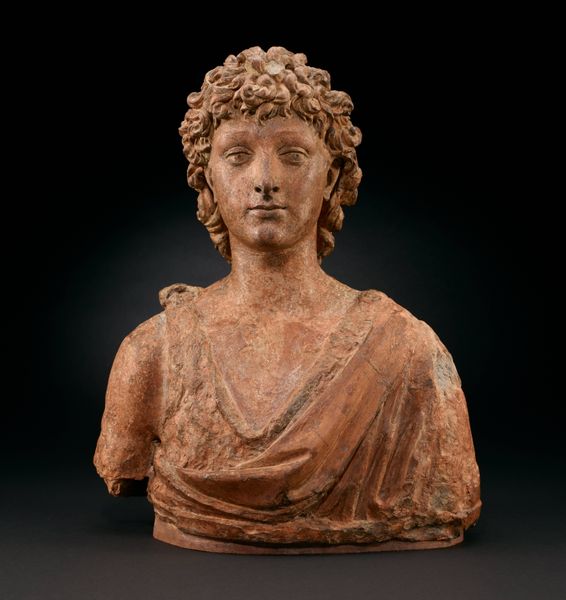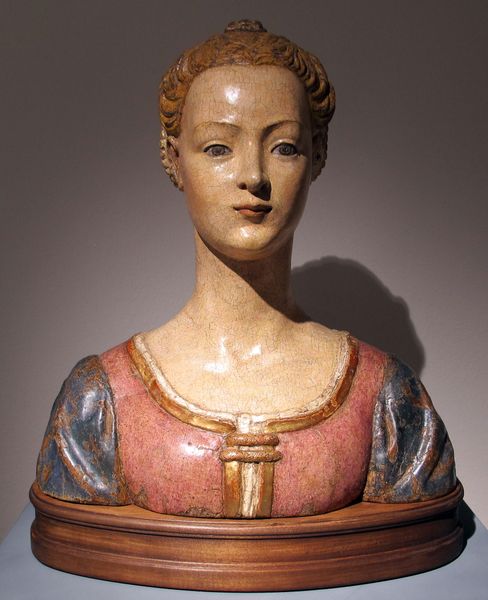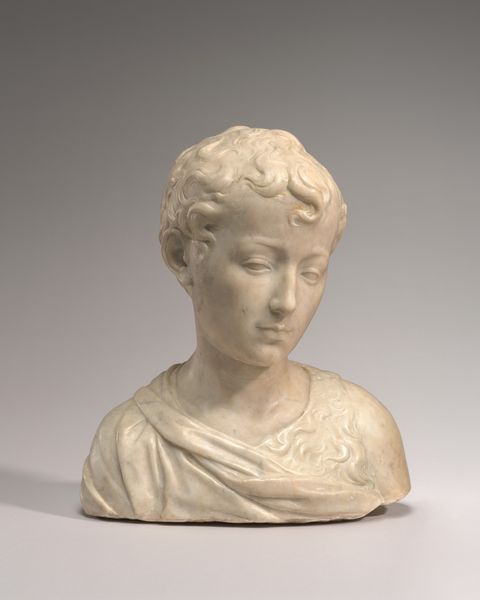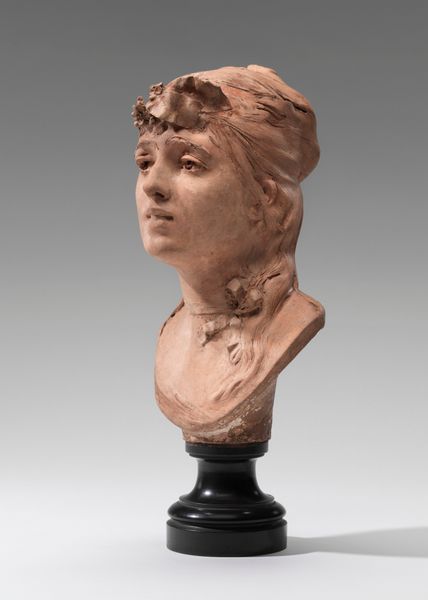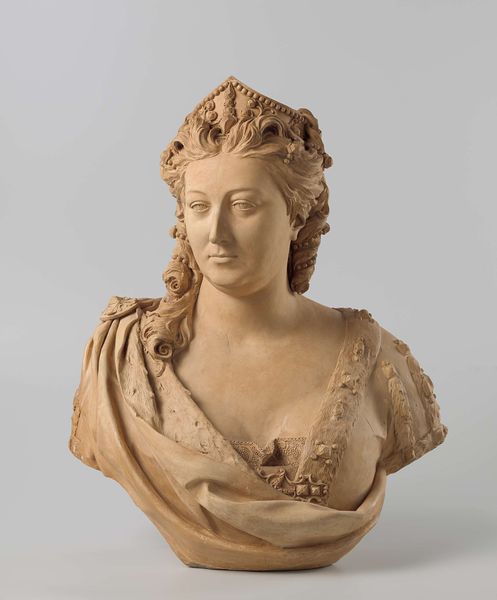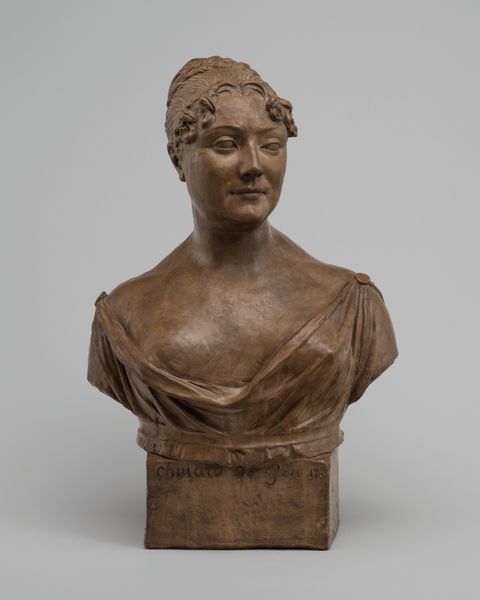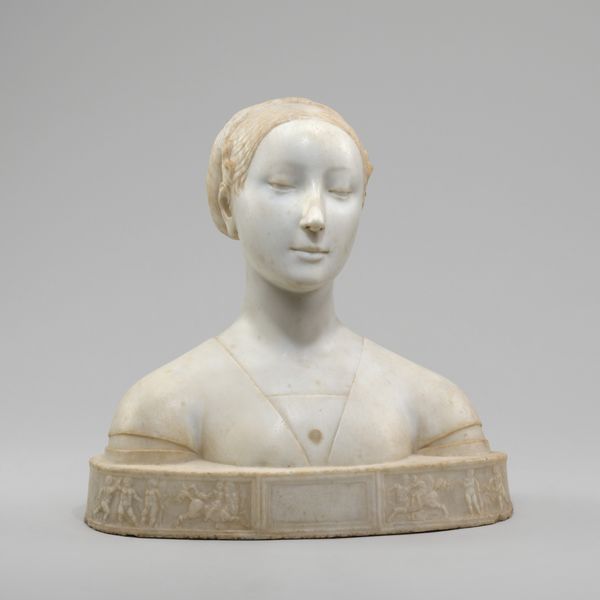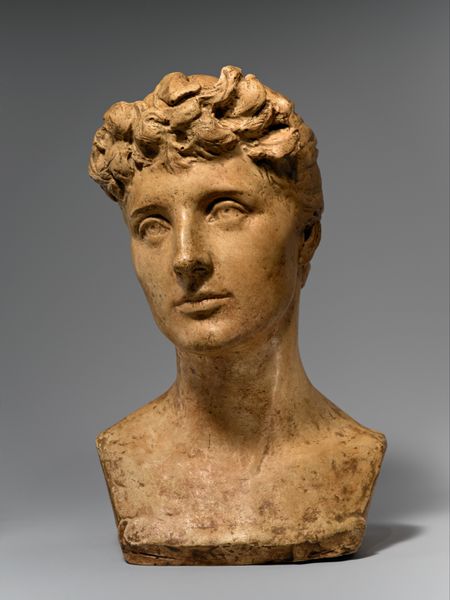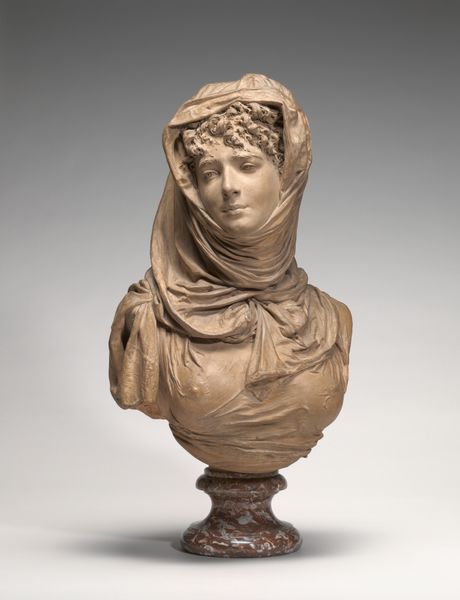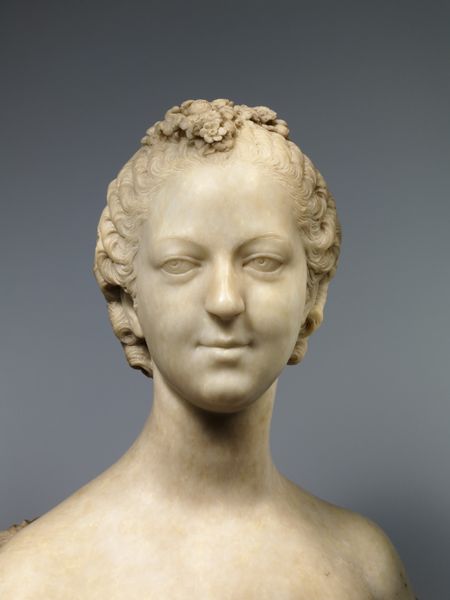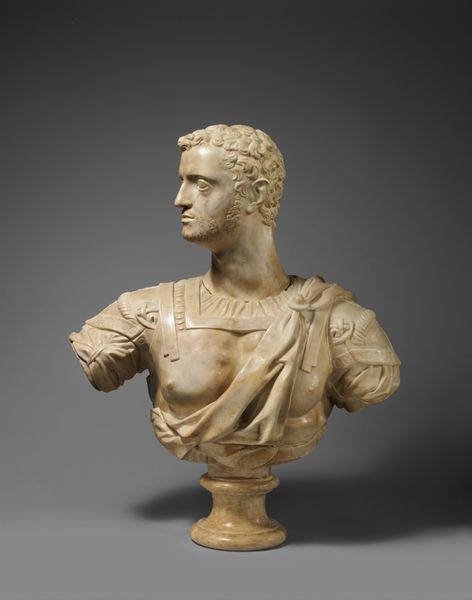
sculpture, wood
#
portrait
#
sculpture
#
figuration
#
11_renaissance
#
sculpture
#
wood
#
decorative-art
#
italian-renaissance
Dimensions: Overall: 19 1/2 × 15 3/4 × 7 1/4 in. (49.5 × 40 × 18.4 cm); Overall (with base and hook on top of head): 24 1/4 × 17 1/4 × 7 1/4 in. (61.6 × 43.8 × 18.4 cm)
Copyright: Public Domain
Curator: Standing before us is "Saint John the Baptist", a wood sculpture created between 1475 and 1499 by Mino da Fiesole. Editor: The first thing that strikes me is how delicately it's rendered, and yet there's an undeniable stillness to his expression. There is such refinement. Curator: Indeed, the material contributes much to that. Fiesole’s expert handling of wood allows for subtle contours and surface variations that generate both realism and grace. Note the sinuous lines defining his drape. Editor: Yes, and the red pigment—doesn’t that play against the starkness we often see in religious sculptures? It immediately brings a humanness, a vulnerability that perhaps reinterprets the Saint's ascetic reputation. Were such vivid colors typical for the period? Curator: The application of polychromy—the addition of color to sculpture—was common in Renaissance art, heightening realism and emotional impact. In terms of its socio-religious context, works like this provided accessible representations of revered figures, thereby strengthening personal devotion among patrons of this period. Editor: Considering its presence here at the Met, does it seem like this piece retains a spiritual role today or is its purpose changed since it first came into the world? Curator: The display of religious artifacts within museum contexts often initiates an interpretive transformation. Now, this is an object of historical analysis as much as, if not more than, a devotional focal point. Its formal qualities come to the forefront—balance, proportion, use of line, and the spatial relations that guide the observer's gaze. The surface of the wood gives evidence of craft and time, each telling. Editor: The contrast between how faith once influenced daily existence and art’s more reflective place now in galleries fascinates me. Looking at this Saint John, I consider the layers of meaning attached over centuries. Curator: Indeed, from spiritual icon to art object, the Saint's representation invites ongoing investigation and appreciation of the many forces shaping visual culture.
Comments
No comments
Be the first to comment and join the conversation on the ultimate creative platform.
